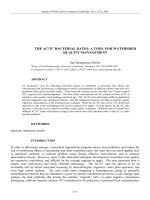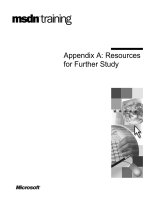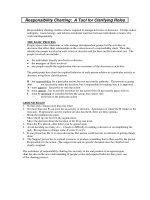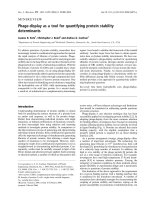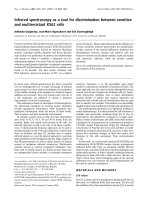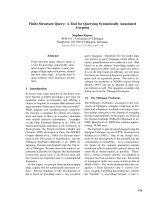CARTOGRAPHY – A TOOL FOR SPATIAL ANALYSIS pdf
Bạn đang xem bản rút gọn của tài liệu. Xem và tải ngay bản đầy đủ của tài liệu tại đây (34.13 MB, 324 trang )
CARTOGRAPHY – A TOOL
FOR SPATIAL ANALYSIS
Edited by Carlos Bateira
Cartography – A Tool for Spatial Analysis
Edited by Carlos Bateira
Contributors
Shao-Feng Bian, Hou-Pu Li, Ricardo García, Juan Pablo de Castro, Elena Verdú, María Jesús
Verdú, Luisa María Regueras, Gheorghe Romanescu, Vasile Cotiugă, Andrei Asăndulesei,
Gabriele Bitelli, Stefano Cremonini, Giorgia Gatta, Stanislav Popelka, Alzbeta Brychtova, Jan
Brus, Vít Voženílek, Krystyna Szykuła, Axente Stoica, Dan Savastru, Marina Tautan, Carla
Bernadete Madureira Cruz, Rafael Silva de Barros, Janvier Fotsing, Emmanuel Tonye,
Bernard Essimbi Zobo, Narcisse Talla Tankam, Jean-Paul Rudant, N. López-Estébanez,
F. Allende, P. Fernández-Sañudo, M.J. Roldán Martín, P. De Las Heras, Jorge M. G. P. Isidoro,
Helena M. N. P. V. Fernandez, Fernando M. G. Martins, João L. M. P. de Lima, Pilar Chias,
Tomas Abad, Borna Fuerst-Bjeliš
Published by InTech
Janeza Trdine 9, 51000 Rijeka, Croatia
Copyright © 2012 InTech
All chapters are Open Access distributed under the Creative Commons Attribution 3.0 license,
which allows users to download, copy and build upon published articles even for commercial
purposes, as long as the author and publisher are properly credited, which ensures maximum
dissemination and a wider impact of our publications. After this work has been published by
InTech, authors have the right to republish it, in whole or part, in any publication of which they
are the author, and to make other personal use of the work. Any republication, referencing or
personal use of the work must explicitly identify the original source.
Notice
Statements and opinions expressed in the chapters are these of the individual contributors and
not necessarily those of the editors or publisher. No responsibility is accepted for the accuracy
of information contained in the published chapters. The publisher assumes no responsibility for
any damage or injury to persons or property arising out of the use of any materials,
instructions, methods or ideas contained in the book.
Publishing Process Manager Iva Simcic
Typesetting InTech Prepress, Novi Sad
Cover InTech Design Team
First published July, 2012
Printed in Croatia
A free online edition of this book is available at www.intechopen.com
Additional hard copies can be obtained from
Cartography – A Tool for Spatial Analysis, Edited by Carlos Bateira
p. cm.
ISBN 978-953-51-0689-0
Contents
Preface IX
Chapter 1 Mathematical Analysis in Cartography
by Means of Computer Algebra System 1
Shao-Feng Bian and Hou-Pu Li
Chapter 2 Web Map Tile Services for Spatial Data Infrastructures:
Management and Optimization 25
Ricardo García, Juan Pablo de Castro, Elena Verdú,
María Jesús Verdú and Luisa María Regueras
Chapter 3 Use of Terrestrial 3D Laser Scanner in Cartographing
and Monitoring Relief Dynamics and Habitation Space
from Various Historical Periods 49
Gheorghe Romanescu, Vasile Cotiugă and Andrei Asăndulesei
Chapter 4 Analysis of Pre-Geodetic Maps
in Search of Construction Steps Details 75
Gabriele Bitelli, Stefano Cremonini and Giorgia Gatta
Chapter 5 Advanced Map Optimalization Based on Eye-Tracking 99
Stanislav Popelka, Alzbeta Brychtova, Jan Brus and Vít Voženílek
Chapter 6 Unexpected 16th Century Finding to Have
Disappeared Just After Its Printing –
Anthony Jenkinson’s Map of Russia, 1562 119
Krystyna Szykuła
Chapter 7 GPS Positioning of Some Objectives Which
are Situated at Great Distances from the Roads
by Means of a “Mobile Slide Monitor – MSM 153
Axente Stoica, Dan Savastru and Marina Tautan
Chapter 8 Contribution of New Sensors to Cartography 181
Carla Bernadete Madureira Cruz and Rafael Silva de Barros
VI Contents
Chapter 9 Contribution of SAR Radar Images for the Cartography:
Case of Mangrove and Post Eruptive Regions 201
Janvier Fotsing, Emmanuel Tonye, Bernard Essimbi Zobo,
Narcisse Talla Tankam and Jean-Paul Rudant
Chapter 10 Cartography of Landscape Dynamics in Central Spain 227
N. López-Estébanez, F. Allende, P. Fernández-Sañudo,
M.J. Roldán Martín and P. De Las Heras
Chapter 11 GIS-Based Models as Tools for Environmental Issues:
Applications in the South of Portugal 251
Jorge M. G. P. Isidoro, Helena M. N. P. V. Fernandez,
Fernando M. G. Martins and João L. M. P. de Lima
Chapter 12 Open Source Tools, Landscape and Cartography:
Studies on the Cultural Heritage at a Territorial Scale 277
Pilar Chias and Tomas Abad
Chapter 13 Imaging the Past: Cartography and Multicultural
Realities of Croatian Borderlands 295
Borna Fuerst-Bjeliš
Preface
The territory is the interaction place of different kind of systems, namely the social and
natural systems. The use and perception of the territory are essential components of
the organization and development of modern society. The understanding of the
territory allows a multidisciplinary view of the world. The territory interpretation and
analysis can be developed with the support of the cartography, unavoidable tool for
modern world. The growing needs for using the cartography has experienced a wide
and important impulse nowadays.
The increase of the modern processes to acquirer information with a particular
evolution on remote sensing represents a great impulse to the evolution of the modern
cartography. This development requires an impressive demand of mathematical
procedures and informatics means. The process of acquiring information is a software
and hardware exigent task that has been subject to important evolution. Larger
amount of data in a shorter period of time can be processed due to scientific advances.
The technological evolution gives us the possibility to acquire information on objects
far away of the users, otherwise impossible to obtain. The information available to
build the cartography is wider and more accurate.
Dealing with space and territory the importance of the cartography affects almost all
areas of human activity and knowledge. This may be the main reason why a wide
range of activities in the modern society uses the cartography. It can be used on areas
such as the autonomous-land-vehicles, historical and archeological research,
geopolitical analysis, natural and environmental issues, landscape assessment,
modeling natural processes. Almost all areas of the knowledge need various
contributions of the cartography, both in the analytical process or in the representation
of data.
This growing need of cartography implies an accurate process of validation of the
information at our disposal and that represents nowadays a crucial issue. Regarding
the wide spectrum of the areas using cartography, the relationship producer/user must
be analysed and monitored. Technics of monitoring the relationship producer/user
have been developed in order to increase the efficiency of the cartography and achieve
the main objectives of the cartographer. More over the efficiency of the access to data
can be improved monitoring the frequency of public assessment.
X Preface
The texts presented in the book are referred to a wide range of issues related with
cartography. The SAR radar images, the GPS positioning and the analysis of remote
sensors are examples of the modern processes of data acquisition allowing the
acquisition of data without direct contact with the study object. This is the main
stream of modern cartography supported on an important evolution of the
mathematic processing and an effective integration in Geographical Information
Systems. The application of cartography to the systems for autonomous land vehicles
reveals the importance of the cartography in modern technologies.
Five of the chapters are related with Historical/Cultural issues revealing the crucial
importance of cartography as a tool to support research, inventory, databases or
simply allows to understand the past by the study of the techniques associated to the
cartographic building process.
Two chapters are related with the studies of natural processes and their relationship
with the social dynamics. The modelling of natural dynamics can be directly related
with de susceptibility analysis of the territory to natural processes and to the building
of the cartography of the most affected areas.
Finally, two texts are related with the evaluation of the relationship producer/user of
the cartography. An objective analysis of the main areas of interest of a map are
assessed using eye tracking and the frequency of use of specified areas gives important
indicators to establish an priority of the information to be processed.
The book provides contributions to very different areas related with cartography:
building of cartography, acquisition of information, environmental issues, natural
hazards, cultural aspects, historical research and the perception on cartography use.
The cartography has an important role on the systemic approach to the territory
analysis. More over represents a transversal tool in a world with a multitude ways of
looking to the reality.
Prof. Carlos Bateira
Department of Geography
Faculdade de Letras da Universidade do Porto
Portugal
Chapter 1
© 2012 Bian and Li, licensee InTech. This is an open access chapter distributed under the terms of the
Creative Commons Attribution License ( which permits
unrestricted use, distribution, and reproduction in any medium, provided the original work is properly cited.
Mathematical Analysis in Cartography
by Means of Computer Algebra System
Shao-Feng Bian and Hou-Pu Li
Additional information is available at the end of the chapter
1. Introduction
Theory of map projections is a branch of cartography studying the ways of projecting the
curved surface of the earth and other heavenly bodies into the plane, and it is often called
mathematical cartography. There are many fussy symbolic problems to be dealt with in map
projections, such as power series expansions of elliptical functions, high order differential of
transcendental functions, elliptical integrals and the operation of complex numbers. Many
famous cartographers such as Adams (1921), Snyder (1987), Yang (1989, 2000) have made
great efforts to solve these problems. Due to historical condition limitation, there were no
advanced computer algebra systems at that time, so they had to dispose of these problems
by hand, which had often required a paper and a pen. Some derivations and
computations were however long and labor intensive such that one gave up midway.
Briefly reviewing the existing methods, one will find that these problems were not
perfectly and ideally solved yet. Formulas derived by hand often have quite complex and
prolix forms, and their orders could not be very high. The most serious problem is that
some higher terms of the formulas are erroneous because of the adopted approximate
disposal.
With the advent of computers, the paper and pen approach is slowly being replaced by
software developed to undertake symbolic derivations tasks. Specially, where symbolic
rather than numerical solutions are desired, this software normally comes in handy.
Software which performs symbolic computations is called computer algebra system.
Nowadays, computer algebra systems like Maple, Mathcad, and Mathematica are widely
used by scientists and engineers in different fields(Awang, 2005; Bian, 2006). By means of
computer algebra system Mathematica, we have already solved many complicated
mathematical problems in special fields of cartography in the past few years. Our research
Cartography – A Tool for Spatial Analysis
2
results indicate that the derivation efficiency can be significantly improved and formulas
impossible to be obtained by hand can be easily derived with the help of Mathematica,
which renovates the traditional analysis methods and enriches the mathematical theory
basis of cartography to a certain extent.
The main contents and research results presented in this chapter are organized as follows. In
Section II, we discuss the direct transformations from geodetic latitude to three kinds of
auxiliary latitudes often used in cartography, and the direct transformations from these
auxiliary latitudes to geodetic latitude are studied in Section III. In Section IV, the direct
expansions of transformations between meridian arc, isometric latitude, and authalic functions
are derived. In Section V, we discuss the non-iterative expressions of the forward and inverse
Gauss projections by complex numbers. Finally in Section VI, we make a brief summary. It is
assumed that the readers are somewhat conversant with Mathematica and its syntax.
2. The forward expansions of the rectifying, conformal and authalic
latitudes
Cartographers prefer to adopt sphere as a basis of the map projection for convenience since
calculation on the ellipsoid are significantly more complex than on the sphere. Formulas for
the spherical form of a given map projection may be adapted for use with the ellipsoid by
substitution of one of various “auxiliary latitudes” in place of the geodetic latitude. In using
them, the ellipsoidal earth is, in effect, transformed to a sphere under certain restraints such
as conformality or equal area, and the sphere is then projected onto a plane (Snyder, 1987). If
the proper auxiliary latitudes are chosen, the sphere may have either true areas, true
distances in certain directions, or conformality, relative to the ellipsoid. Spherical map
projection formulas may then be used for the ellipsoid solely with the substitution of the
appropriate auxiliary latitudes.
The rectifying, conformal and authalic latitudes are often used as auxiliary ones in
cartography. The direct transformations form geodetic latitude to these auxiliary ones are
expressed as transcendental functions or non-integrable ones. Adams (1921), Yang (1989,
2000) had derived forward expansions of these auxiliary latitudes form geodetic one
through complicated formulation. Due to historical condition limitation, the derivation
processes were done by hand and orders of these expansions could not be very high. Due to
these reasons, the forward expansions for these auxiliary latitudes are reformulated by
means of Mathematica. Readers will see that new expansions are expressed in a power
series of the eccentricity of the reference ellipsoid
e
and extended up to tenth-order terms of
e
. The expansion processes become much easier under the system Mathematica.
2.1. The forward expansion of the rectifying latitude
The meridian arc from the equator
0B
to
B
is
2223/2
0
(1 ) (1 sin )
B
Xa e e B dB
(1)
Mathematical Analysis in Cartography by Means of Computer Algebra System
3
where
X
is the meridian arc;
B
is the geodetic latitude;
a
is the semi-major axis of the
reference ellipsoid;
(1) is an elliptic integral of the second kind and there is no analytical solution. Expanding
the integrand by binomial theorem and itntegrating it item by item yield:
2
0246810
(1 )( sin2 sin4 sin6 sin8 sin10 )Xa e KBK BK BK BK BK B (2)
where
24 6 8 10
0
24 6 8 10
2
46 8 10
4
68 10
6
8
8
3 45 175 11025 43659
1
4 64 256 16384 65536
3 15 525 2205 72765
8 32 1024 4096 131072
15 105 2205 10395
256 1024 16384 65536
35 105 10395
3072 4096 262144
315
131072
Keee e e
Kee e e e
Ke e e e
Kee e
Ke
10
10
10
3465
524288
693
1310720
e
Ke
(3)
The rectifying latitude
is defined as
2
()
2
X
X
(4)
Inserting (2) into (4) yields
246810
sin2 sin4 sin6 sin8 sin10BBBBB B
(5)
where
220
440
660
880
10 10 0
/
/
/
/
/
KK
KK
KK
KK
KK
(6)
Yang (1989, 2000) gave an expansion similar to (5) but expanded
up to sin8B . For
simplicity and computing efficiency, it is better to expand (6) into a power series of the
eccentricity. This process is easily done by means of Mathematica. As a result, (6) becomes:
Cartography – A Tool for Spatial Analysis
4
24 6 8 10
2
46810
4
68 10
6
810
8
10
10
3 3 111 141 1533
8 16 1024 2048 32768
15 15 405 165
256 256 8192 4096
35 35 4935
3072 2048 262144
315 315
131072 65536
693
1310720
ee e e e
ee e e
ee e
ee
e
(7)
2.2 The forward expansion of the conformal latitude
Omitting the derivation process, the explicit expression for the isometric latitude
q
is
/
2
2
22
0
11sin
ln tan
421 sin
(1 sin )cos
arctanh(sin )- arctanh( sin )
e
B
eBeB
qdB
eB
eBB
Be e B
(8)
For the sphere, putting
0e
and rewriting the geodetic latitude as the conformal one
, (8)
becomes
ln tan( ) arctanh(sin )
42
q
(9)
Comparing (9) with (8) leads to
/
2
1sin
tan( ) tan( )( )
42 421 sin
e
BeB
eB
(10)
Therefore, it holds
/2
1sin
2arctan tan( )( )
421 sin 2
e
BeB
eB
(11)
Since the eccentricity is small, the conformal latitude is close to the geodetic one. Though
(11) is an analytical solution of
, (11) is usually expanded into a power series of the
eccentricity
23 9
23
23 9
0
00 0
10
910
10
0
11 1
(,) (,0)
2! 3! 9!
1
10!
e
ee e
e
Be B e e e
e
ee e
ee
e
(12)
Mathematical Analysis in Cartography by Means of Computer Algebra System
5
as the conventional usage in mathematical cartography.
Through the tedious expansion process, Yang (1989, 2000) gave a power series of the
eccentricity
e
for the conformal latitude
as
2468
sin2 sin4 sin6 sin8BBBBB
(13)
Due to that (11) is a very complicated transcendental function, the coefficients
2
,
4
,
6
,
8
in (13) derived by hand are only expanded to eighth-order terms of
e
. They are not accurate
as expected and there are some mistakes in the eighth-order terms of
e
.
In fact, Mathematica works perfectly in solving derivatives of any complicated functions. By
means of Mathematica, the new derived forward expansion expanded to tenth-order terms
of
e reads
246810
sin2 sin4 sin6 sin8 sin10BBBBB B
(14)
The derived coefficients in (13) and (14) are listed in Table 1 for comparison.
Coefficients derived by Yang(1989, 2000) Coefficients derived by the author
246 8
2
46 8
4
68
6
8
8
1 5 3 1399
2 24 32 53760
5 7 689
48 80 17920
13 1363
480 53760
677
17520
eee e
ee e
ee
e
246 8 10
2
46 8 10
4
6810
6
810
8
10
10
1 5 3 281 7
224325760240
5 7 697 93
48 80 11520 2240
13 461 1693
480 13440 53760
1237 131
161280 10080
367
161280
eee e e
ee e e
eee
ee
e
Table 1. The comparison of coefficients of the forward expansion of conformal latitude derived by
Yang (1989, 2000) and the author
Table 1 shows that the eighth order terms of
e
in coefficients given by Yang(1989, 2000) are
erroneous.
2.3. The forward expansion of the authalic latitude
From the knowledge of mapping projection theory, the area of a section of a lune with a
width of a unit interval of longitude
F
is
22 22
222 22
0
cos sin 1 1 sin
(1 ) (1 ) ln
41sin
(1 sin ) 2(1 sin )
B
BBeB
Fa e dBa e
eeB
eB eB
(15)
where
F
is also called authalic latitude function.
Cartography – A Tool for Spatial Analysis
6
Denote
2
111
ln
41
2(1 )
e
A
ee
e
(16)
Suppose that there is an imaginary sphere with a radius
2
(1 )Ra eA
(17)
and whose area from the spherical equator
0
to spherical latitude
with a width of a
unit interval of longitude is equal to the ellipsoidal area
F
, it holds
222
sin (1 ) sinRaeAF
(18)
Therefore, it yields
22
1sin 11sin
arcsin ln
41sin
2(1 sin )
BeB
AeeB
eB
(19)
where
is authalic latitude. Yang(1989, 2000) gave its series expansion as
2468
sin2 sin4 sin6 sin8BBBBB
(20)
(19) is a complicated transcendental function. It is almost impossible to derive its eighth-
order derivate by hand. There are some mistakes in the high order terms of coefficients
2
,
4
,
6
,
8
.The new derived forward expansion expanded to tenth-order terms of
e
by
means of Mathematica reads
246810
sin2 sin4 sin6 sin8 sin10BBBBB B
(21)
The derived coefficients in (20) and (21) are listed in Table 2 for comparison.
Coefficients derived by Yang(1989, 2000) Coefficients derived by the author
246 8
2
46 8
4
68
6
8
8
1 31 59 126853
3 180 560 518400
17 61 3622447
360 1260 94089600
383 6688039
43560 658627200
27787
23522400
eee e
ee e
ee
e
246 8 10
2
46 8 10
4
68 10
6
810
8
10
1 31 59 42811 605399
3 180 560 604800 11975040
17 61 76969 215431
360 1260 1814400 5987520
383 3347 1751791
45360 259200 119750400
6007 201293
3628800 59875200
5839
171
eee e e
ee e e
ee e
ee
10
07200
e
Table 2. The comparison of coefficients of the forward expansion of conformal latitude derived by
Yang (1989, 2000) and the author
Mathematical Analysis in Cartography by Means of Computer Algebra System
7
Table 2 shows that the eighth-orders terms of
e
in coefficients given by Yang(1989, 2000) are
erroneous.
2.4. Accuracies of the forward expansions
In order to validate the exactness and reliability of the forward expansions of rectifying,
conformal and authalic latitudes derived by the author, one has examined their accuracies
choosing the CGCS2000 (China Geodetic Coordinate System 2000) reference ellipsoid with
parameters
6378137ma
, 1 / 298.257222101
f
(Chen, 2008; Yang, 2009), where
f
is the
flattening. The accuracies of the forward expansions derived by Yang (1989, 2000) are also
examined for comparison. The results show that the accuracy of the forward expansion of
rectifying latitude derived by Yang (1989, 2000) is higher than 10
-5
″, while the accuracy of
the forward expansion (5) derived by the author is higher than 10
-7
″. The accuracies of the
forward expansion of conformal and authalic latitudes derived by Yang (1989, 2000) are
higher than 10
-4
″, while the accuracies of the forward expansions derived by the author are
higher than 10
-8
″ . The accuracies of forward expansions derived by the author are improved
by 2~4 orders of magnitude compared to forward expansions derived by Yang (1989, 2000).
3. The inverse expansions of rectifying, conformal and authalic latitudes
The inverse expansions of these auxiliary latitudes are much more difficult to derive than
their forward ones. In this case, the differential equations are usually expressed as implicit
functions of the geodetic latitude. There are neither any analytical solutions nor obvious
expansions. For the inverse cases, to find geodetic latitude from auxiliary ones, one usually
adopts iterative methods based on the forward expansions or an approximate series form.
Yang (1989, 2000) had given the direct expansions of the inverse transformation by means of
Lagrange series method, but their coefficients are expressed as polynomials of coefficients of
the forward expansions, which are not convenient for practical use. Adams (1921) expressed
the coefficients of inverse expansions as a power series of the eccentricity
e by hand, but
expanded them up to eighth-order terms of
e
at most. Due to these reasons, new inverse
expansions are derived using the power series method by means of Mathematica. Their
coefficients are uniformly expressed as a power series of the eccentricity and extended up to
tenth-order terms of
e
.
3.1. The inverse expansions using the power series method
The processes to derive the inverse expansions using the power series method are as
follows:
1.
To obtain their various order derivatives in terms of the chain rule of implicit
differentation;
2.
To compute the coefficients of their power series expansions;
3.
To integrate these series item by item and yield the final inverse expansions.
Cartography – A Tool for Spatial Analysis
8
One can image that these procedures are quite complicated. Mathematica output shows that
the expression of the sixth order derivative is up to 40 pages long! Therefore, it is
unimaginable to derive the so long expression by hand. These procedures, however, will
become much easier and be significantly simplified by means of Mathematica. As a result,
the more simple and accurate expansions yield.
3.1.1. The inverse expansion of the rectifying Latitude
Differentiation to the both sides of (1) yields
2
223/2
(1 )
(1 sin )
dX a e
dB
eB
(22)
From (4) and (2), one knows
2
0
(1 )Xa eK
(23)
Inserting (23) into (22) yields
223/2
0
(1 sin )
dB
eB
Kd
(24)
To expand (24) into a power series of
sin
, we introduce the following new variable
sint
(25)
therefore
1
cos
d
dt
(26)
and then denote
223/2
0
() (1 sin )
dB
ft e B
Kd
(27)
Making use of the chain rule of implicit differentiation
,,
tt
df df df df
dB d d dB d d
ff
dB d dt d dt dB d dt d dt
(28)
It is easy to expand (27) into a power series of sin
23 (10)10
11 1
( ) (0) (0) (0) (0) (0)
2! 3! 10!
tt t t
ft f f t f t f t f t
(29)
Omitting the detailed procedure, one arrives at
Mathematical Analysis in Cartography by Means of Computer Algebra System
9
2468 10
246810
0
1 sin sin sin sin sin
dB
AAAAA
Kd
(30)
where
24 6 8 10
2
46 8 10
4
68 10
6
810
8
10
10
3 27 729 4329 381645
2 8 128 512 32768
21 621 11987 757215
8 64 512 16384
151 775 621445
32 32 8192
1097 57607
128 1024
8011
512
Aee e e e
Ae e e e
Aee e
Ae e
Ae
(31)
Multiplying
0
K and integrating at the both sides of (30) give the inverse expansion of
rectifying latitude as
246810
sin2 sin 4 sin6 sin8 sin10Ba a a a a
(32)
where
24 6 8 10
2
46810
4
68 10
6
810
8
10
10
3 3 213 255 20861
8 16 2048 4096 524288
21 21 533 197
256 256 8192 4096
151 151 5019
6144 4096 131072
1097 1097
131072 65536
8011
2621440
ae e e e e
aee e e
aee e
aee
ae
(33)
3.1.2. The inverse expansion of the conformal latitude
Differentiating the both sides of (10) yields
2
22
1
cos
(1 sin )cos
de
dB
eBB
(34)
Therefore, it holds
22
2
(1 sin )cos
(1 )cos
dB e B B
d
e
(35)
Cartography – A Tool for Spatial Analysis
10
For the same reason, we introduce the following new variable
sint
(36)
and then denote
22
2
(1 sin )cos
()
(1 )cos
dB e B B
ft
d
e
(37)
Using the same procedure as described in the former section, one arrives at
2468 10
246810
2
1
sin sin sin sin sin
1
dB
BBBBB
d
e
(38)
where
246810
2
46 8 10
4
68 10
6
810
8
10
10
11 21
21725
22
14 62 1369 3005
33 24 24
56 614 4909
59 20
8558 7367
315 35
4174
63
Be e eee
Bee e e
Bee e
Bee
Be
(39)
Integrating the both sides of (38) gives the inverse expansion of conformal latitude as
246810
sin2 sin4 sin6 sin8 sin10Bb b b b b
(40)
where
246 8 10
2
46 8 10
4
68 10
6
810
8
10
10
15 1 13 3
2 24 12 360 160
7 29 811 81
48 240 11520 2240
7 81 3029
120 1120 53760
4279 883
161280 20160
2087
161280
be e e e e
be e e e
be e e
bee
be
(41)
3.1.3 The inverse expansion of the authalic latitude
Inserting (18) into (15) yields
Mathematical Analysis in Cartography by Means of Computer Algebra System
11
222
0
cos
sin
(1 sin )
B
B
A
dB
eB
(42)
Differentiating the both sides of (42) yields
222
(1 sin ) cos
cos
dB A e B
dB
(43)
For the same reason, we introduce the folllowing new variable
sint
(44)
and then denote
222
(1 sin ) cos
()
cos
dB A e B
ft
dB
(45)
(45) can be expanded into a power series of
sin
. Using the chain rule of implicit function
differentiation, one similarly arrives at
2468 10
246810
( ) sin sin sin sin sin
dB
ft A C C C C C
d
(46)
where
24 6 8 10
2
46 8 10
4
68 10
6
810
8
10
10
4 41 4108 58427 28547
3 15 945 9450 3465
92 6574 223469 2768558
45 945 14175 93555
3044 28901 21018157
945 1890 467775
24236 2086784
4725 66825
768272
93555
Ceeeee
Ce e e e
Cee e
Ce e
Ce
(47)
To get the inverse expansion of the authalic latitude, one integrates (46) and arrives at
246810
sin2 sin 4 sin6 sin8 sin10Bccccc
(48)
Cartography – A Tool for Spatial Analysis
12
where
24 6 8 10
2
46 8 10
4
68 10
6
810
8
10
1 31 517 120389 1362253
3 180 5040 181400 29937600
23 251 102287 450739
360 3780 1814400 997920
761 47561 434501
45360 1814400 14968800
6059 625511
1209600 59875200
48017
ce e e e e
ce e e e
ce e e
ce e
c
10
29937600
e
(49)
3.2. The inverse expansions using the Hermite interpolation method
In mathematical analysis, interpolation with functional values and their derivative values is
called Hermite interpolation. The processes to derive the inverse expansions using this
method are as follows:
1.
To suppose the inverse expansions are expressed in a series of the sines of the multiple
arcs with coefficients to be determined;
2.
To compute the functional values and their derivative values at specific points;
3.
To solve linear equations according to interpolation constraints and obtain the
coefficients.
The detailed derivation processes are given by Li (2008, 2010). Confined to the length of the
chapter, they are omitted. Comparing the results derived by this method with those in 3.1,
one will find that they are consistent with each other even though they are formulated in
different ways. This fact substantiates the correctness of the derived formulas.
3.3. The inverse expansions using the Lagrange’s theorem method
We wish to investigate the inversion of an equation such as
()
y
xfx
(50)
with
()fx x
and
y
x
. The Lagrange’s theorem states that in a suitable domain the
solution of (50) is
1
1
1
(1)
[()]
!
nn
n
n
n
d
xy fy
n
dy
(51)
The proof of this theorem is given by Whittaker (1902) and Peter (2008).
The processes to derive the inverse expansions using the Lagrange series method are as
follows:
Mathematical Analysis in Cartography by Means of Computer Algebra System
13
1. To apply the Lagrange theorem to a trigonometric series;
2.
To write the inverse expansions of the rectifying, conformal and authalic latitude;
3.
To express the coefficients of the inverse expansions as a power series of the
eccentricity.
The detailed derivation processes are given by Li (2010). Confined to the length of the
chapter, they are also omitted. Comparing the results derived by this method with those in
3.1 and 3.2, one will find that they are all consistent with each other even though they are
also formulated in different ways. This fact substantiates the correctness of the derived
formulas, too.
3.4. Accuracies of the inverse expansions
The accuracies of the inverse expansions derived by Yang (1989, 2000) and the author has
been examined choosing the CGCS2000 reference ellipsoid.
The results show that the accuracy of the inverse expansion of rectifying latitude is higher
than 10
-5
″, while the accuracy of the inverse expansion (32) derived by the author is higher
than 10
-7
″. The accuracies of the inverse expansion of conformal and authalic latitudes
derived by Yang (1989, 2000) are higher than 10
-4
″, while the accuracies of the inverse
expansions derived by the author are higher than 10
-8
″. The accuracies of inverse expansions
derived by the author are improved by 2~4 orders of magnitude compared to those derived
by Yang (1989, 2000).
4. The direct expansions of transformations between meridian arc, isometric
latitude and authalic latitude function
The meridian arc, isometric latitude and authalic latitude function are functions of
rectifying, conformal and authalic latitudes correspondingly. The transformations between
the three variables are indirectly realized by computing the geodetic latitude in the past
literatures such as Yang (1989, 2000), Snyder (1987). The computation processes are tedious
and time-consuming. In order to simplify the computation processes and improve the
computation efficiency, the direct expansions of transformations between meridian arc,
isometric latitude and authalic latitude function are comprehensively derived by means of
Mathematica.
4.1. The direct expansions of transformations between meridian arc and
isometric latitude
4.1.1. The direct expansion of the transformation from meridian arc to isometric latitude
Inserting the known meridian arc
X
into (23) yields the rectifying latitude
. Using the
inverse expansion of the rectifying latitude (32) and the forward expansion of the conformal
latitude (14), one obtains the conformal latitude
. Inserting it into (9) yields the isometric
latitude
q
. The whole formulas are as follows:

